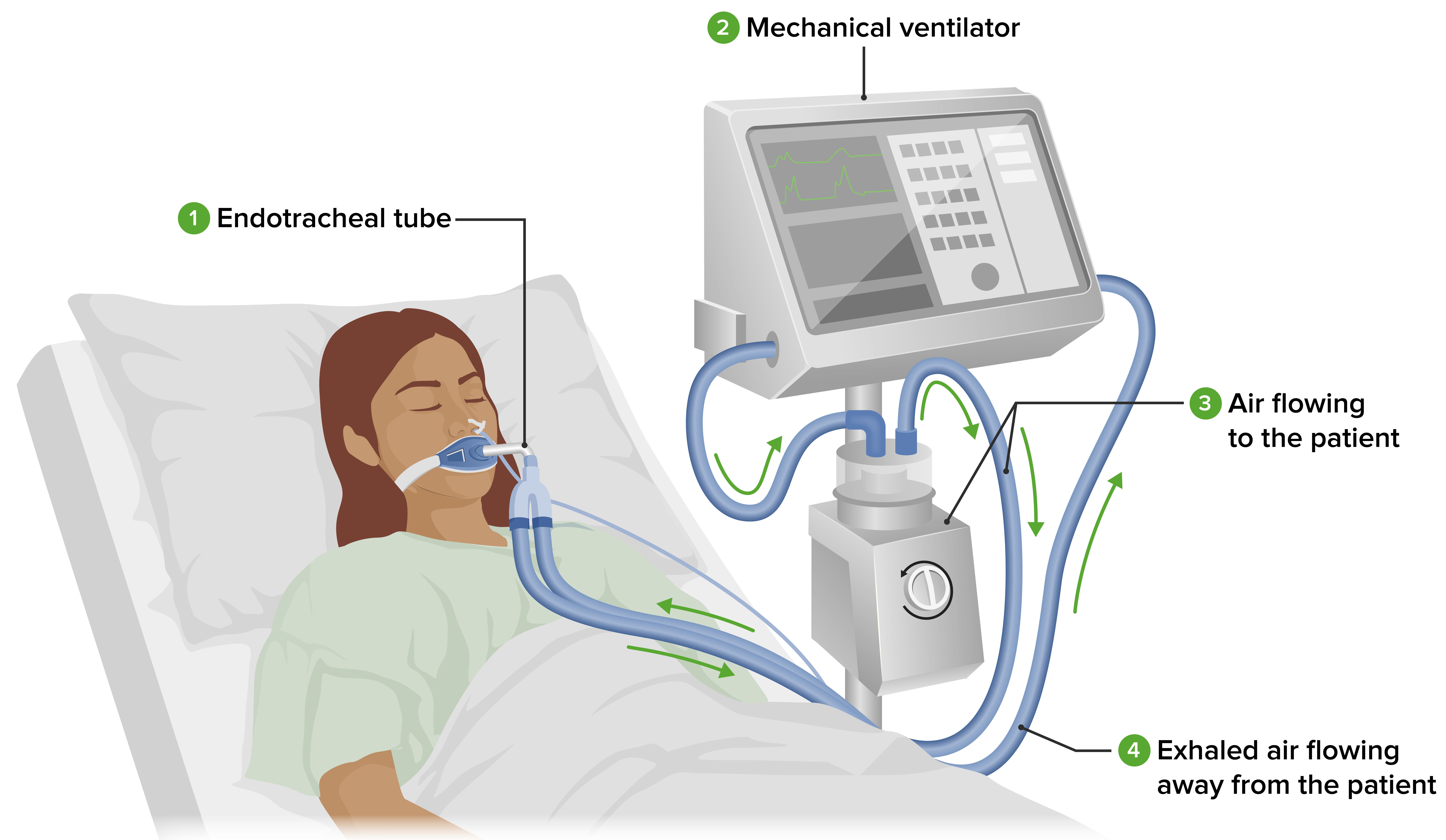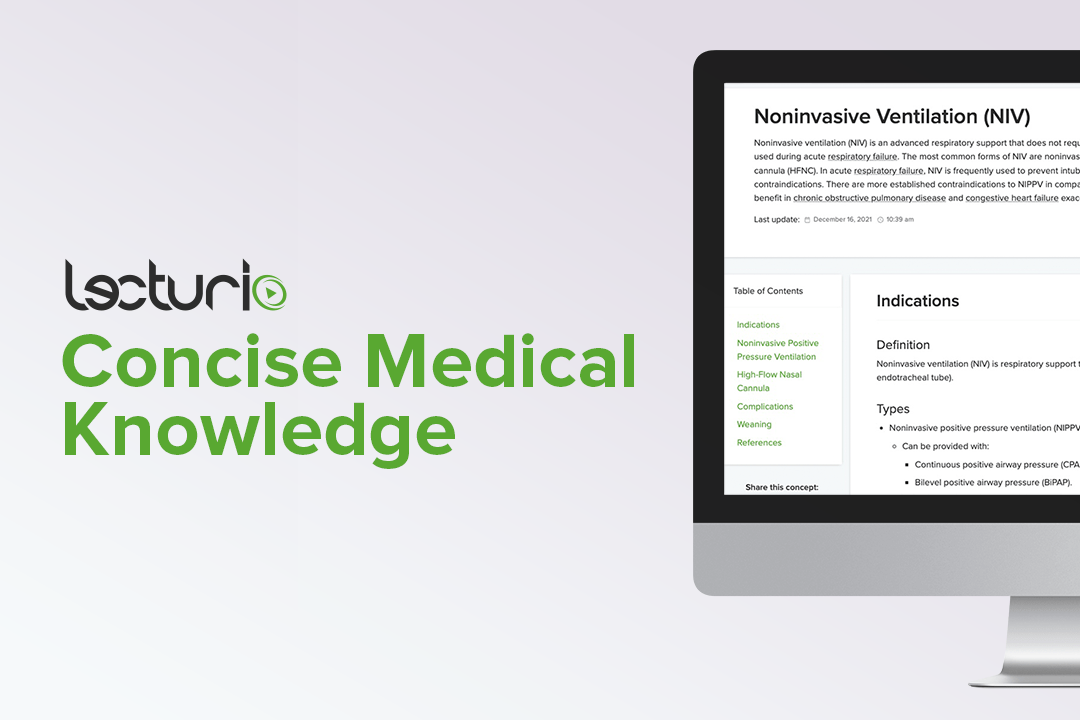Playlist
Show Playlist
Hide Playlist
Ventilation vs. Spontaneous Ventilation – Respiration and Cardiovascular System
-
02 - Respiration and Cardiovascular System.pdf
-
Download Lecture Overview
00:00 So, should we ventilate or should we let the patient breath spontaneously? The advantages of mechanical ventilation is, it's very easy to control the minute ventilation. With mechanical ventilation you just adjust the tidal volume or adjust the rate. Very easy to do. 00:16 But then, on the other hand, spontaneous ventilation requires no instrumentation of the patient's airway, you don't have to intubate them. Spontaneous ventilation allows the patient to set their own ventilatory pattern, which is often perfectly Ok. But, in the presence of many drugs or other disease processes that may be going on, it's not always the best, the best model to follow. 00:40 In either case, constant monitoring of breathing and expired CO2, plus the patient's oxygen saturation is necessary with all general anesthesia. 00:52 So that, mechanical versus spontaneous ventilation is usually determined by the expected length of the surgery, the patient's position during the surgery, and the need or lack of need for muscle relaxation during the surgery. Some of the cons of managing ventilation with a ventilator, it's very easy to over ventilate the patient and this can cause a decrease in CO2 in the blood, which causes a condition known as respiratory alkalosis. This again is generally not terribly important, but it's not something you want to allow to exist for any extended period of time. 01:34 In addition, if you're going to mechanically ventilate a patient, you must instrument their airway. 01:40 And there are always risks that you won't be able to do the instrumentation, won't be able to get the endotracheal tube in, or that in your struggle to get it in, you may damage the airway and cause the patient not only difficulties during the surgery, but difficulty subsequent to surgery. Spontaneous ventilation on the other hand is often associated with a rise in the carbon dioxide and the development of respiratory acidosis. This is well tolerated at moderate levels and is well tolerated for short periods of time, particularly in healthy and younger patients, but may be a critical mistake in elderly patients with unstable cardiac disease. So how about the cardiovascular
About the Lecture
The lecture Ventilation vs. Spontaneous Ventilation – Respiration and Cardiovascular System by Brian Warriner, MD, FRCPC is from the course Anesthesiology: Introduction.
Included Quiz Questions
Which of the following statements regarding ventilation is FALSE?
- Spontaneous ventilations are often associated with an increase in carbon dioxide and respiratory alkalosis.
- With mechanical ventilation, it is easy to overventilate a patient, which can lead to respiratory alkalosis.
- Mechanical ventilation requires instrumentation of the patient’s airway, increasing the risk of complications.
- Mechanical ventilation makes it very easy to control the patient’s minute ventilation.
- Whether the patient is breathing spontaneously or being mechanically ventilated, the patient's expired carbon dioxide and SaO2 must be constantly monitored.
Customer reviews
5,0 of 5 stars
| 5 Stars |
|
1 |
| 4 Stars |
|
0 |
| 3 Stars |
|
0 |
| 2 Stars |
|
0 |
| 1 Star |
|
0 |
This lecture was informative and engaging. The speaker did an excellent job of presenting the material in a clear and concise manner, making it easy to understand.





